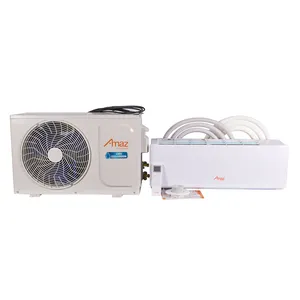Popular in your industry




























































Related Searches:



































































































 Ready to Ship
Ready to Ship
























Top categories
About pedestal stand fan parts
In the quest for a comfortable living and working environment, the humble pedestal stand fan stands tall as a beacon of relief, especially during the sweltering heat of summer. This buyer's guide delves into the intricate world of pedestal stand fan parts, offering a comprehensive look at the components that make up these cooling companions. From the blades that slice through the air to the motors that drive their motion, understanding these parts is crucial for making an informed purchase. Whether you're looking to replace a worn-out component or aiming to build your own custom fan, this guide will navigate you through the essentials of pedestal stand fan parts, ensuring you make choices that enhance performance, durability, and efficiency.
Understanding Pedestal Stand Fans

Pedestal and tower fans are common cooling solutions that operate effectively in moderately humid conditions by accelerating the evaporation from perspiration, aiding in cooling. In drier climates, their effectiveness can be enhanced by using a wet towel or misting water, which promotes cooling through evaporation.
These fans differ in design and functionality. Pedestal fans, also known as stand fans, typically feature an adjustable height and a circular head atop a vertical shaft. On the other hand, tower fans, with their slender profile, are designed to fit into smaller spaces and often include features such as air purification.
When considering a new fan, it's important to look at the features that meet specific cooling needs. Some fans offer basic functions, while others come with additional features like heating and air purifying capabilities. The choice between a pedestal or a tower fan ultimately depends on personal preferences, space requirements, and desired airflow.
Key Components of a Pedestal Stand Fan

Pedestal stand fans are comprised of various components that ensure their functionality and efficiency. The base of the fan is equipped with rubber feet, which provide stability and prevent movement during operation. These feet also absorb vibrations, contributing to a quieter performance.
At the heart of the fan's operation is the motor, which is responsible for the movement of the blades. The motor includes a capacitor that initiates the spin of the fan through magnetic flux. A spindle connects to the blades, facilitating their rotation, and is secured by a blade bush fixing screw.
Safety and durability are addressed with the inclusion of a wire guard, which prevents accidents, and a sturdy back cover that protects the internal components. The fan's oscillation is controlled by a gearbox and an oscillator knob, allowing for adjustable airflow direction.
The fan's performance is further refined by a regulator choke that manages the electrical input frequency, ensuring consistent operation without grid disruptions. Additionally, bush bearings reduce friction among moving parts, prolonging the fan's lifespan.
Each part plays a crucial role in the fan's overall performance, from the pivot pin that supports the fan's oscillating motion to the crank lever that translates rotary motion into a reciprocating one. Understanding these key components is essential for anyone looking to source pedestal stand fan parts.
Blades and Airflow Mechanism
Understanding the airflow mechanism of pedestal stand fans begins with the blades' design. Axial fans, similar to those used in pedestal fans, operate by propelling air in a direction parallel to the shaft where the blades rotate. The number and shape of the blades are crucial in determining fan performance, influencing the pressure difference created and the resultant airflow. Typically, these fans have fewer blades, often ranging from two to six, which allows for a larger radius and lower operational speed while maintaining efficiency. This design ensures a steady flow of air without abrupt changes in velocity that could otherwise lead to inefficiencies or noise.
The blade element theory offers insight into the blade design process, where each blade segment is analyzed independently to optimize the fan's operation. By considering the forces acting on each element, including lift and drag coefficients, designers can tailor the fan blades to achieve the desired balance between airflow and power consumption. The spacing between the blades (s) is also a critical factor, with the number of blades (z) inversely affecting the spacing, following the relationship s = (2πr)/z, where r is the radius of the fan. This relationship is essential for ensuring that the fan produces the necessary thrust without compromising on stability or generating excessive noise.
Motor Specifications and Performance
The core of a pedestal stand fan's functionality lies in its motor, which in this case is a 3-speed, 1/20 HP, 120 volt, single phase unit. This motor is designed for durability and requires minimal maintenance, thanks to its permanently lubricated, permanent split capacitor. Such specifications ensure that the fan operates efficiently, providing adequate air movement with varying speed options to suit different conditions and preferences.
Control of the fan is facilitated by a rear-mounted rotary dial, allowing users to adjust the speed according to their needs. The power cord is a standard 6 foot, 3-conductor type, suitable for both commercial and residential use. This combination of features contributes to the fan's performance, ensuring it delivers a steady stream of air across a range of environments, from retail spaces to personal offices.
Stand and Base Design: Stability Meets Flexibility
The design of the stand and base in pedestal fans is a critical factor that combines stability with flexibility. A variety of base designs are available, including cross bases, round bases, and the more modern X bases, each offering a unique balance and footprint to suit different spaces and preferences. The construction of these bases often involves durable plastics or metals, ensuring that the fan remains upright and stable during operation. The flexibility aspect is addressed through adjustable heights and tilting heads, allowing users to direct airflow precisely where it's needed. This adaptability makes pedestal fans a versatile choice for both home and commercial environments. Furthermore, the inclusion of oscillating features in many models enhances the fan's ability to circulate air across a wider area, improving the cooling effect without the need for multiple units.
Innovations in pedestal fan design also reflect in the variety of blade options, from traditional three-blade configurations to more efficient five-blade designs, which can impact the airflow and noise levels. The motor specifications are tailored to balance performance with energy consumption, with some models featuring eco-friendly DC motors. These components are crucial for consumers looking for a blend of efficiency, convenience, and environmental consideration. The ease of assembly is another aspect where modern pedestal fans excel, with intuitive designs that can be put together without specialized tools, making them user-friendly and accessible to a broader audience.
Selecting the Right Materials for Durability

When selecting materials for the construction of pedestal stand fans, durability is a key consideration. A common choice is carbon steel, known for its strength and longevity. However, alternatives such as mill run galvanized steel, aluminum, and various grades of stainless steel are also available, catering to different environmental conditions and usage requirements. Each material offers unique benefits, with aluminum being lightweight and stainless steel providing a measure of corrosion resistance, although it's important to note that no material is completely corrosion-proof. The choice of material will directly impact the fan's durability and suitability for various settings.
In addition to material selection, the finish of the fan parts plays a crucial role in extending the lifespan of pedestal stand fans. Options range from industrial-grade paint, which can provide a layer of protection and aesthetic appeal, to hot dip galvanizing, a process that coats the steel parts with a layer of zinc to guard against rust. The combination of the right materials and finishes can significantly enhance the fan's resistance to wear and tear, making it a vital factor for buyers to consider when sourcing fan parts.
Features and Innovations in Modern Pedestal Fans
Modern pedestal fans integrate Noise Reduction Technology. This technology is a blend of an aerodynamic blade with a diffusion cone design, which together deliver efficient room cooling while minimizing noise. The fans' controls offer multiple settings, enabling users to customize their cooling and noise preferences, a feature that underscores the user-centric design of modern pedestal fans.
Additionally, the fan's adjustable height provides versatility in cooling preferences, which is achieved through a user-friendly twist and lock height adjustment. This feature reflects the flexibility and stability that are hallmarks of contemporary stand fan design. The inclusion of an auto shut-off timer with multiple intervals adds to the fan's convenience and energy efficiency, aligning with the growing demand for environmentally considerate features in household appliances.
Ease of Assembly and Maintenance
Assembling a pedestal electric fan is a straightforward process that can be completed with minimal tools. The initial step involves securing the pedestal to the base, ensuring a stable foundation. This is typically done with a simple screwdriver and four screws. Next, the motor head is placed atop the pedestal and connected to the tubular metal stand, followed by tightening the screw knob to secure it in place.
The assembly continues with attaching the switch to the motor head, a step that integrates the fan's operational mechanism. The rear guard is then affixed to the motor head with screws, providing a protective barrier. The fan blades are inserted onto the motor shaft and secured, which is a critical step for the fan's functionality as it directly affects airflow.
Following this, the guard ring lock is placed on the front guard, which is then fitted to the rear guard and secured with a screw. This ensures the fan's guards are firmly in place, which is essential for safety and performance. The height of the fan can be adjusted by loosening a knob on the pedestal, allowing for customization to the user's preference. Finally, the fan is made operational by plugging it into an AC wall outlet and switching it on to test its functionality.
Energy Efficiency and Environmental Considerations
Modern pedestal fans have embraced energy efficiency as a core feature, reflecting a growing consumer demand for environmentally considerate products. Many models now incorporate LED lights, which are known for their low power consumption and long lifespan, contributing to a reduced environmental footprint. Additionally, the integration of solar panels in some pedestal fans is a testament to the innovative strides being made in the industry. These solar-powered options offer a renewable energy source for operation, minimizing reliance on traditional electricity and fostering a greener living environment. The use of DC motors in certain fans further enhances energy efficiency, as these motors generally require less electrical power to operate compared to their AC counterparts. This shift towards energy-saving components not only aligns with environmental sustainability goals but also offers the end-user the benefit of lower energy bills. By sourcing pedestal stand fan parts that prioritize energy efficiency, businesses can cater to eco-conscious consumers and contribute to a more sustainable future.
Advantages of Sourcing Fan Parts from Alibaba.com
Alibaba.com offers a diverse range of pedestal stand fan parts, catering to various requirements and preferences. From essential components like motors, which are the heart of any fan, to blades that determine the airflow efficiency, the platform provides access to all the necessary parts. The availability of different materials, such as durable plastics and metals, ensures that the fans not only perform well but also have a long service life.
Innovations are not scarce on Alibaba.com, with modern pedestal fans featuring enhancements like remote controls for convenience and bladeless designs for safety and ease of cleaning. Energy efficiency is also a key consideration, with many parts designed to optimize power usage without compromising on performance, which is crucial in today's environmentally conscious market.
The platform's assortment includes parts suitable for various fan models, from compact domestic units to robust industrial fans. This variety ensures that whether one is looking to maintain a single fan or supply components for a range of products, Alibaba.com can meet those needs. Moreover, the ready-to-ship products section streamlines the procurement process, allowing for quick and efficient sourcing of fan parts.
Conclusion
In conclusion, the anatomy of a pedestal stand fan is a symphony of parts working in harmony to deliver the breeze that cools our spaces. Each component, from the motor and blades to the stand and base, plays a pivotal role in the fan's operation. Innovations such as Noise Reduction Technology and energy-efficient features like LED lights and solar panels reflect the evolving landscape of fan design, catering to the eco-conscious consumer. Alibaba.com emerges as a one-stop-shop for sourcing these diverse and innovative fan parts, offering a plethora of options to meet the needs of both individual consumers and bulk buyers. With this guide, buyers are equipped with the knowledge to select parts that promise durability, performance, and environmental consideration, ensuring that their pedestal stand fans stand the test of time and efficiency. As we embrace the advancements in fan technology, we also contribute to a more sustainable and comfortable future, one component at a time.
































































